Giving new life to leftovers doesn’t always mean a second meal. Instant Pot Chicken Bone Broth is a great way to maximize the “whole animal.” Simmering unused scraps and bones with fragrant veggies and seasonings on low pressure creates an incredibly flavorful homemade stock, perfect for cooking or sipping.
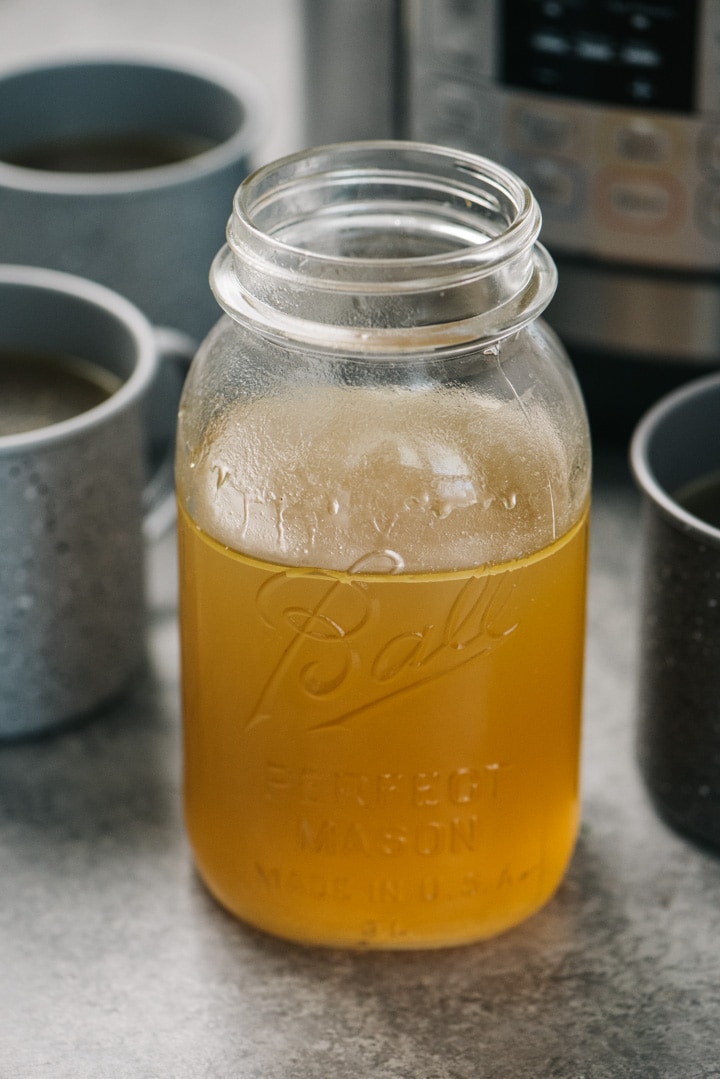
Jump to:
Based on my recent foray into cooking whole chickens, we’re gonna focus on a little “adaptive reuse” today. But before we get creative, let’s take a moment to demystify something. To put it bluntly, bone broth is stock.
The same way that “Chilean Sea Bass” is actually the Patagonian Toothfish, “dried plums” are (yes, your grandpa’s) prunes, and “baby carrots” are just honest-to-goodness whittled-down regular old carrots, “bone broth” is just stock. Clever marketing makeovers to be sure, but that’s all it is.
What really confuses things is the use of “broth” in the name, because there is (in culinary terms) a distinct difference between broth and stock: stock is primarily made by simmering bones (and connective tissue found on said bones), while broth is primarily made by simmering meat removed from the bone. Both can (and usually do) include vegetables (aromatics like onion, carrots, and celery) and seasoning (salt, pepper, bay leaf, etc.) in the process.
Bone broth (which absolutely could have just been called bone stock were it not for the marketing-friendly alliteration) can be made from cooked or uncooked bones. The biggest difference between the two is the texture of the finished product – uncooked bones yield more collagen and therefore produce a more concentrated, gelatinous stock. Prolonged cooking (say roasting a chicken and then simmering its bones for stock) breaks down collagen, thereby releasing less, and resulting in a thinner stock. (Plus, regardless of the bones, water is going to dilute the stock no matter what.)
“But I thought a big boost of collagen was the whole point of the ‘bone broth’ movement?” It’s one of many points, Reader. So don’t worry your healthy little head. Instant Pot chicken bone broth is still chock full of good stuff.
Chicken Bone Broth Benefits
Because you’ll be using a pre-existing carcass (a phrase I never envisioned I’d write in my career), it’s impossible to give you precise amounts of most of the nutrients you’ll get making this recipe, but rest assured you’ll get:
- Calcium, potassium, iron, zinc and other minerals
- Glucosamine and chondroitin
- Vitamins A and K
- Omega-3 and omega-6 fatty acids
- And, of course, protein from collagen
Combined, all these properties of bone broth suggest that it will help maintain a healthy digestive tract, reduce inflammation, and support healthy joints. It’s also become a high-protein staple for keto, Whole30, and paleo diets.
How to Make Chicken Bone Broth in the Instant Pot
When life gives you chicken dinners, make chicken bone broth. This super simple recipe for Instant Pot Chicken Bone Broth yields a sizeable batch of cooking stock -and/or sipping broth, if that’s your thing. Simply toss onion, carrots, celery, and seasoning in with the remaining bones and scraps from a cooked whole chicken, and cook on low for 4 hours.
- Place a (mostly) picked clean chicken carcass into the inner pot. It’s okay if some pieces of chicken remain (like back meat) – it will further flavor the stock. Add a quartered onion, carrots, and celery.
- Add filtered water to the “fill” line. Top with a bay leaf, kosher salt, and peppercorns.
- Seal the pot. Program to LOW PRESSURE for 4 hours (240 minutes). Let the pressure release naturally.
Double Strain the Broth
After many years and attempts at different methods, I suggest a 2-part method for straining homemade bone broth. First you’ll strain, then you’ll filter.
- Set a large strainer over a stock pot. Strain the both from the bones into the stock pot. This will filter out the largest pieces.
- Rinse the inner pot, then fit a fine mesh strainer on top. Layer cheesecloth over the strainer. Pour the broth over the cheesecloth and allow it to filter naturally.
Chef’s Tips
- Vegetable scraps are fair game. Save the ends of carrots, leftover onions, and celery tops (including leaves) to make stock. I have a “stock veggie” freezer bag I toss them into and typically have enough saved up after a week or two to make stock.
- To skin or not to skin? I find that onion skins and carrot skins lend a bitter, woodsy aftertaste. I always peel, but ultimately it’s personal preference!
- Omit the salt if you’re sensitive, then season to taste while using it in recipes.
- Bone broth from a cooked carcass doesn’t yield a firm gel – that’s okay! It’s still loaded with protein and collagen.
Storing and Freezing
FRIDGE: bone broth will keep in the fridge in sealed container for up to 5 days. Mason jars work well!
FREEZER: Properly stored, bone broth will keep several months in the freezer. I use one of a few different storage methods for different uses or preferences:
- Method 1: transfer the broth to gallon zip bags; press out the air, then freeze flat. I don’t LOVE this option because the pouring (in and out) can be messy. But it makes for efficient use of freezer space!
- Method 2: store 2-4 c portions in deli storage containers (I use these). This is my favorite way to store large portions of broth. It defrosts easily in the fridge or the microwave, and leftovers are easy to store. They do, however, take up more space.
- Method 3: freeze in 1 cup silicone molds (I use these); once frozen, pop them out of the molds and transfer to ziplock freezer bags. With a super gelatinous broth, freeze some smaller portions in ice cube trays. These are great when you need just a splash of broth for a pan-sauce because they thicken well and lend lots of body (thanks collagen!).
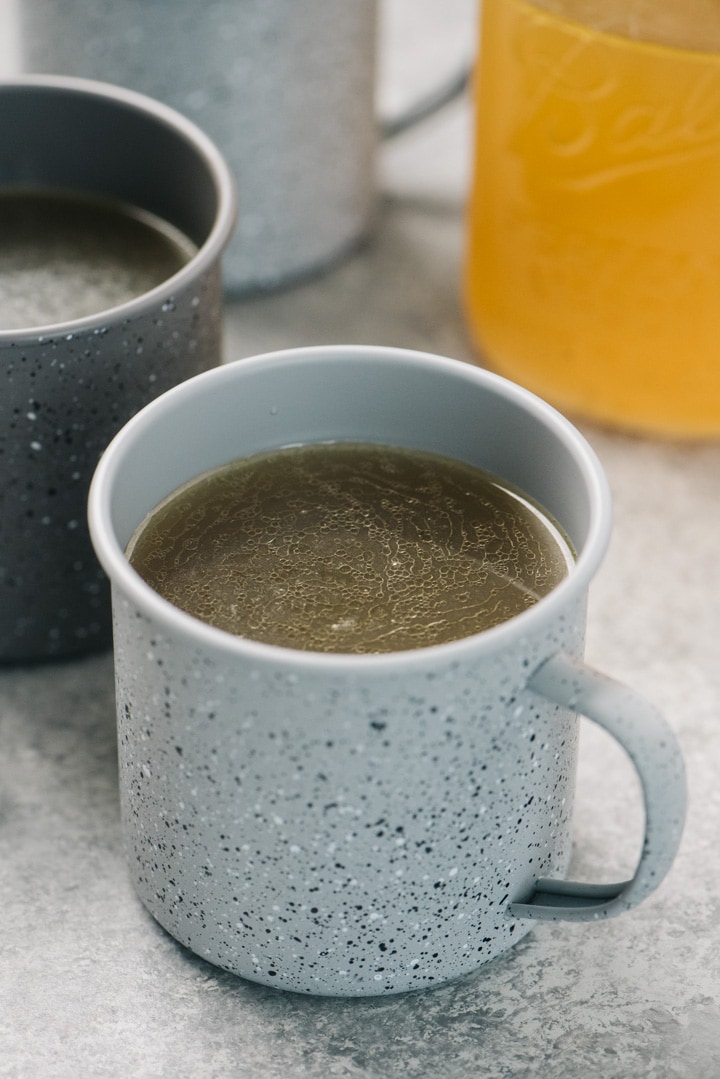
Uses and Recipes
Sip it. In a mug or on the go – just make sure to warm it up first!
Use for soups and stews. Try it in meaty Caldo Verde soup, creamy Potato Onion Soup or even stew-like Chicken Etouffee.
Use it to make rice or quinoa. Broth brings more seasoning than water, and works great for all kinds of rice and rice-like dishes including Instant Pot Risotto, Creamy Cauliflower Risotto, Instant Pot Quinoa, and Instant Pot Jasmine Rice.
To thicken pan sauces. A little homemade bone broth can go a long way to creating a thicker, richer sauce. Try it with Creamy Lemon Chicken or Italian Basil Chicken.
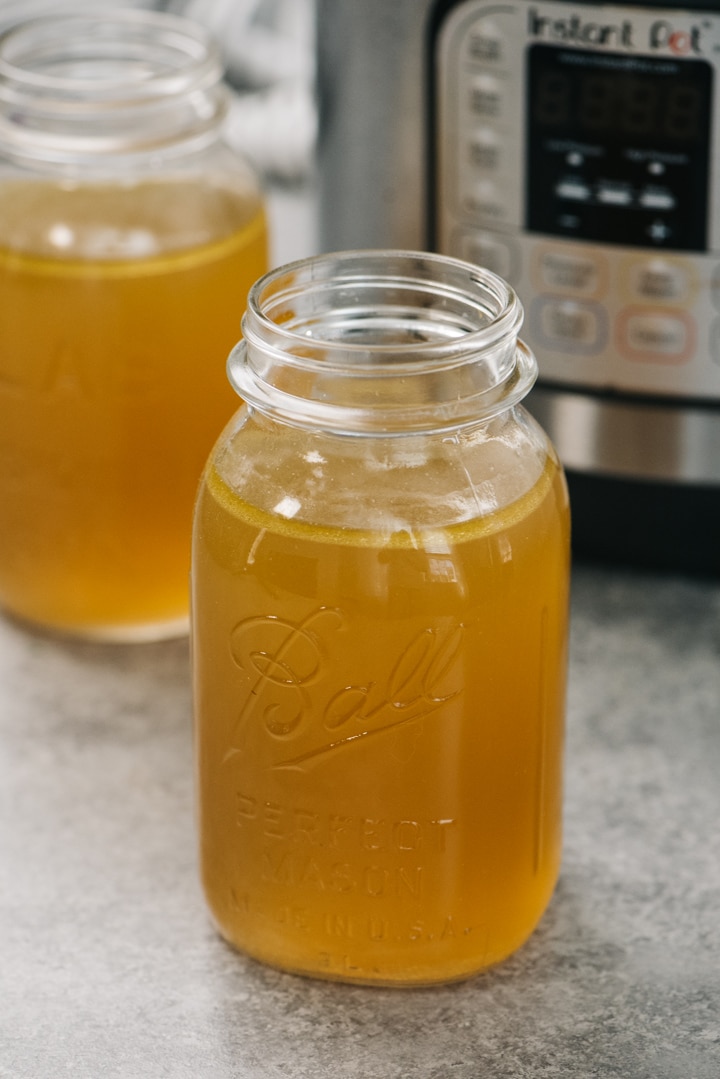
Did you make this Instant Pot Chicken Bone Broth? I’d love to know how it turned out! Leave a comment and a rating below.
While you’re at it, let’s be friends – follow me on Pinterest and Instagram for the latest and greatest.
Recipe

Instant Pot Chicken Bone Broth
Print Recipe Rate this Recipe Pin RecipeRecommended Equipment
- Mesh Strainer
- Stock Pot
Ingredients
- 1 chicken carcass, from a 4-5 lb chicken
- 1 medium onion, outer skin removed, quartered
- 2 medium carrots, peeld, and coarsely chopped
- 2 stalks celery, trimmed and coarsely chopped
- 2 whole bay leaves
- 1 tablespoon kosher salt, more or less to taste
- 1 tablespoon black peppercorns
Instructions
- Place the chicken carcass into the inner pot. Add the onion, carrot, and celery.
- Add enough filtered water to fill the instant pot to the “fill” line. Top the water with the bay leaf, then add the salt and peppercorns.
- Seal the pot and ensure the pressure valve is set to sealing. Program the instant pot to LOW pressure for 4 hours (240 minutes). It will take about 45 minutes to come to pressure. Allow the pressure to release naturally for 15-20 minutes (or release naturally completely), then release the remaining pressure manually.
- Strain the broth. Position a large strainer over a stock pot. Pour the broth through the strainer, allow it to catch the larger bones and vegetables.
- Filter the broth. Rinse the inner pot, then position a fine mesh strainer into it. Layer the strainer with several layers of cheesecloth. Pour the filtered broth over the cheesecloth, allowing it to filter naturally.
- Store the bone broth in sealed containers in the fridge for up to 5 days, or in the freezer for extended storage. See notes.


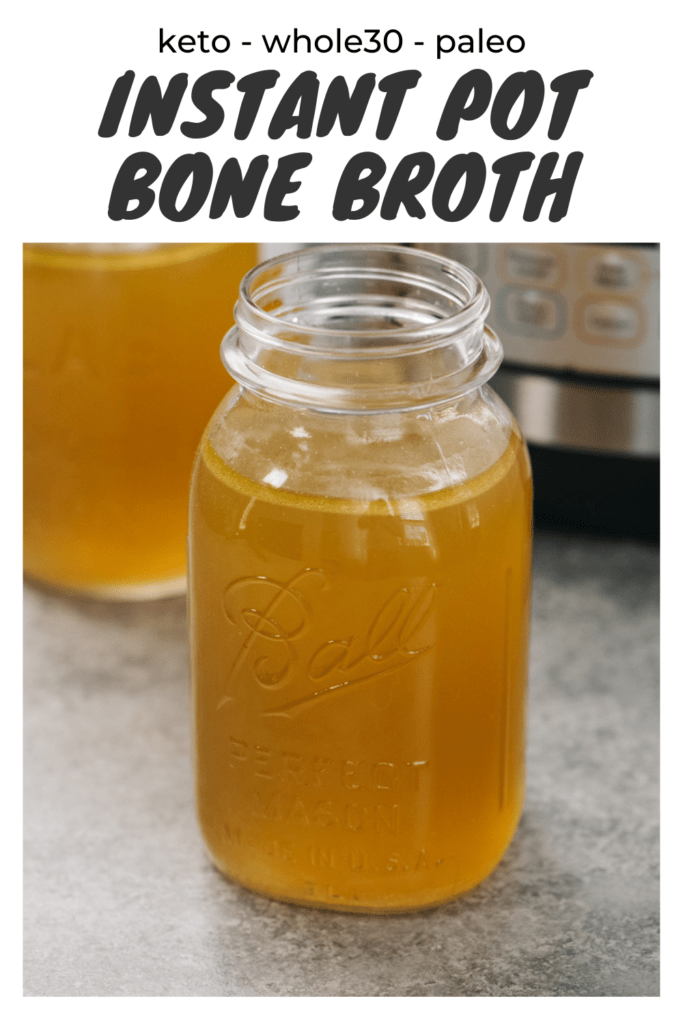
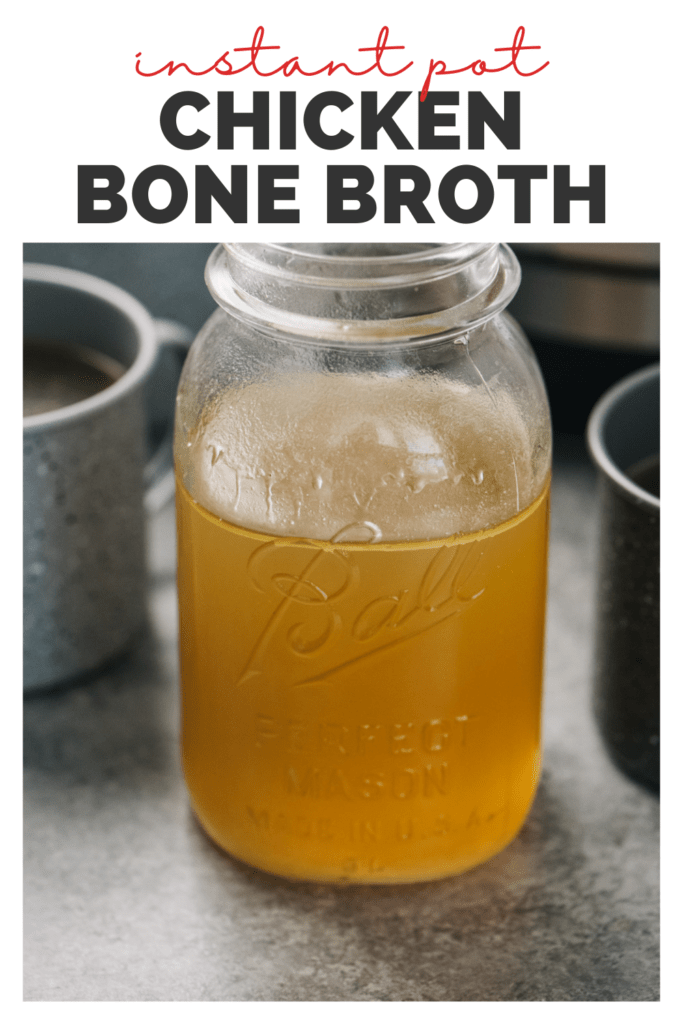


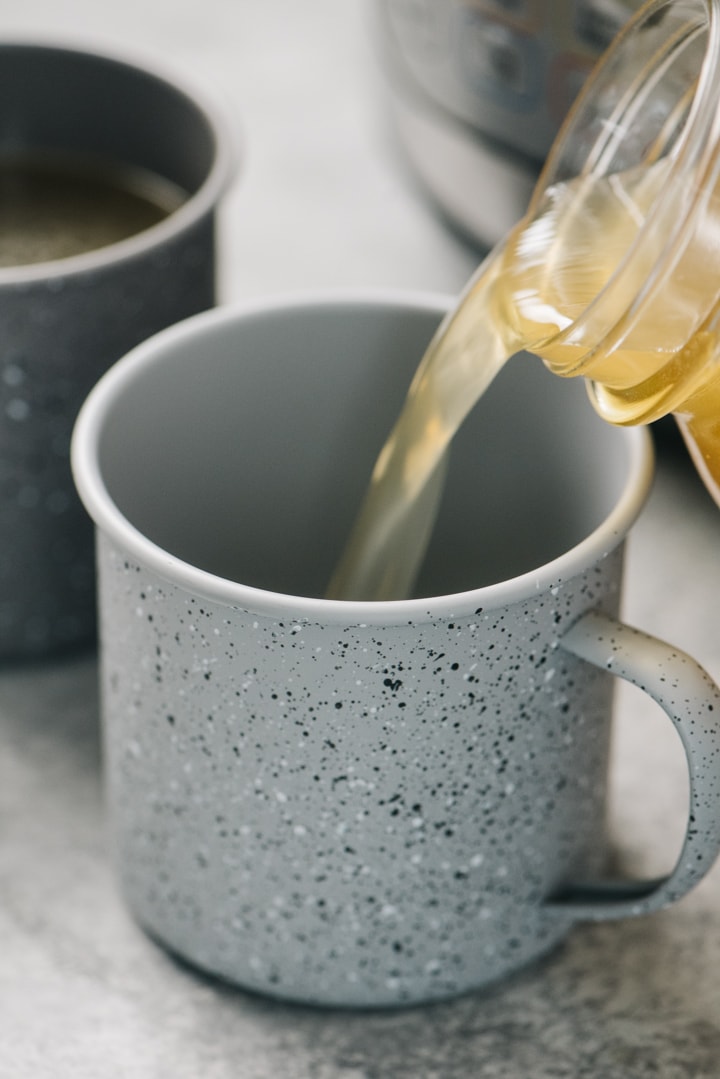
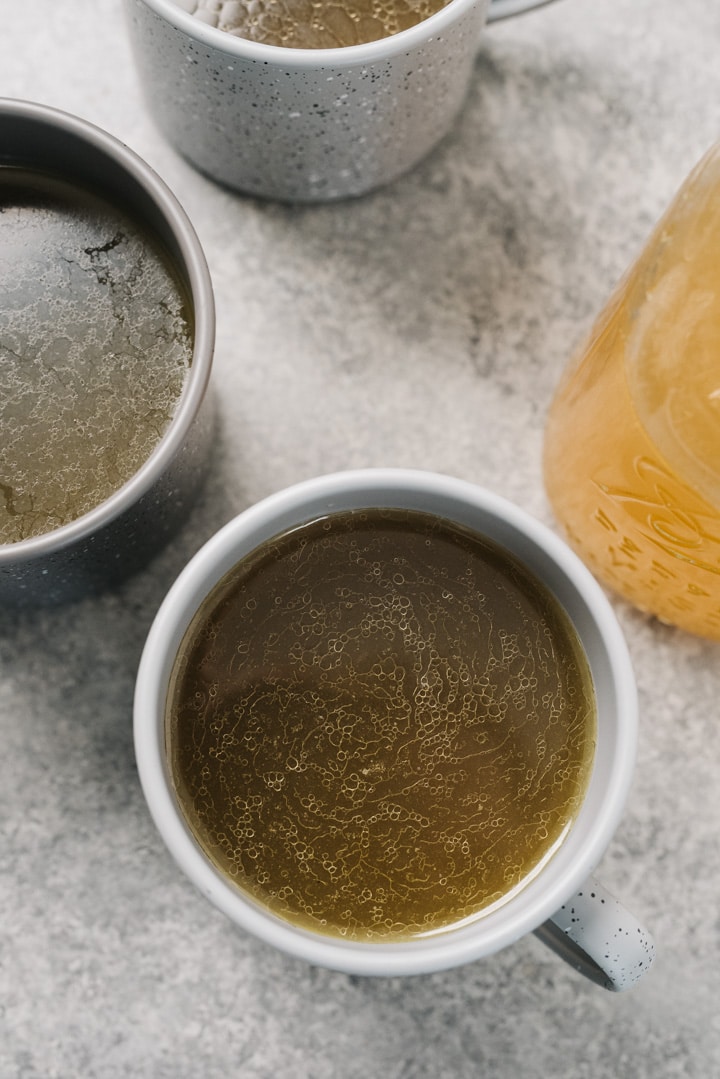
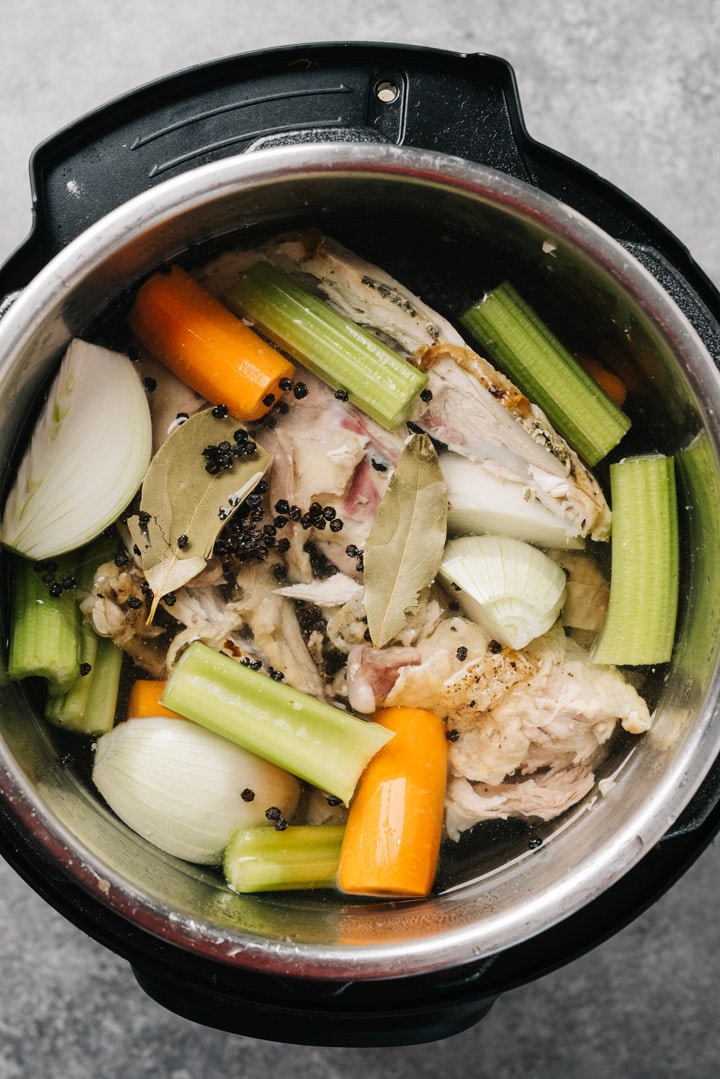
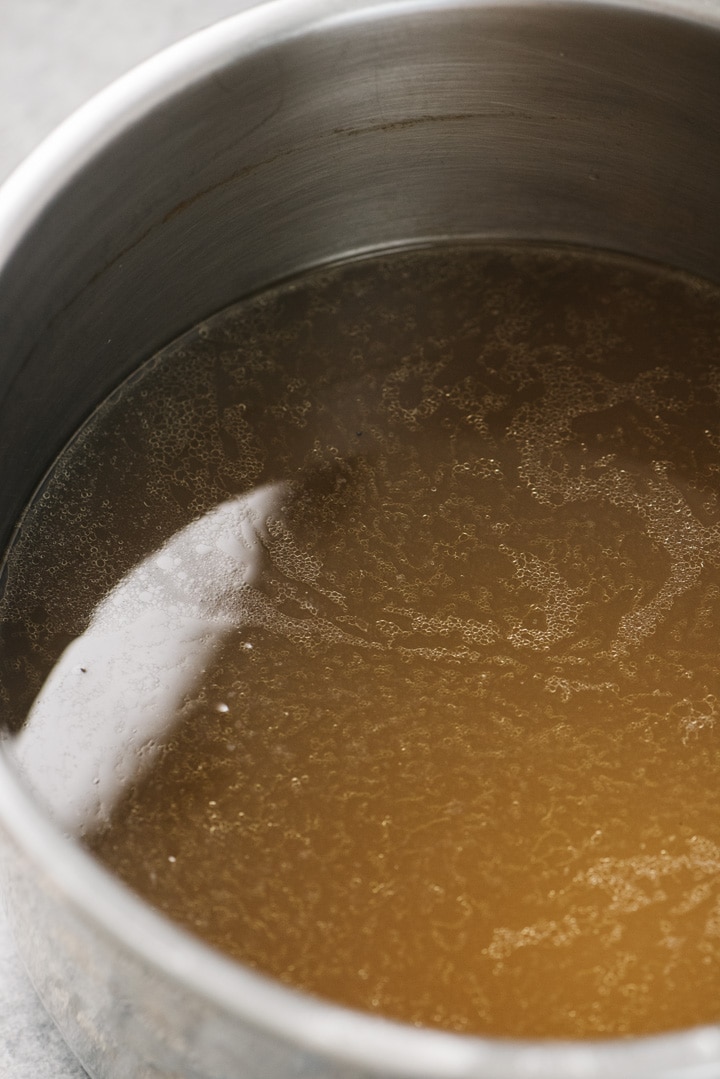
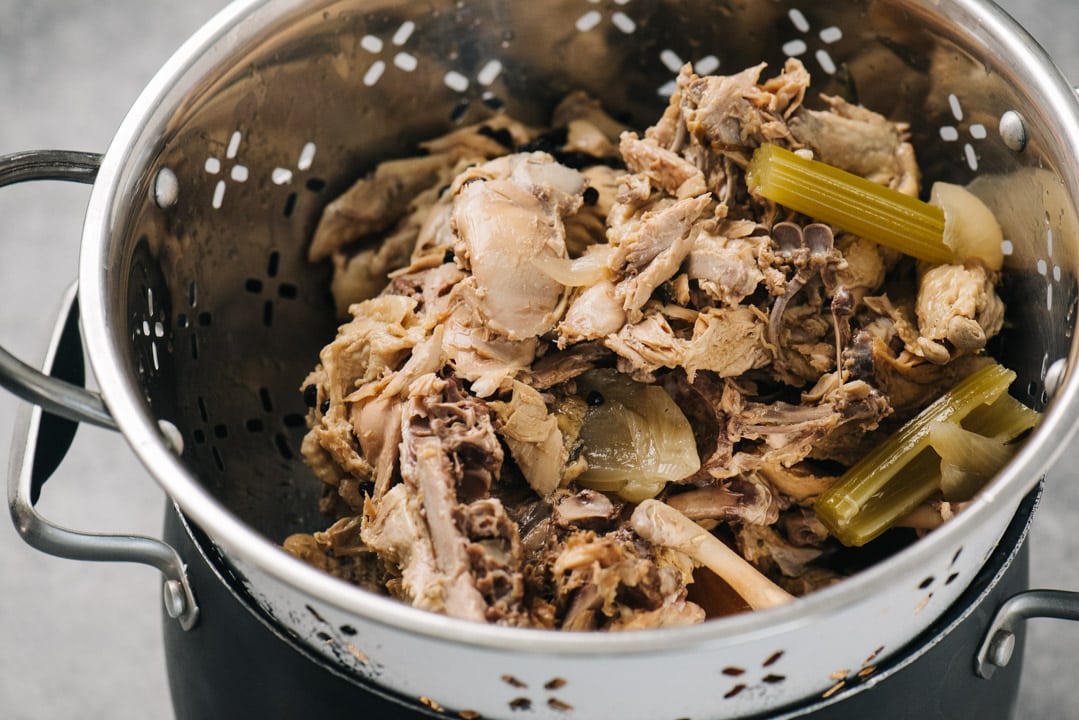
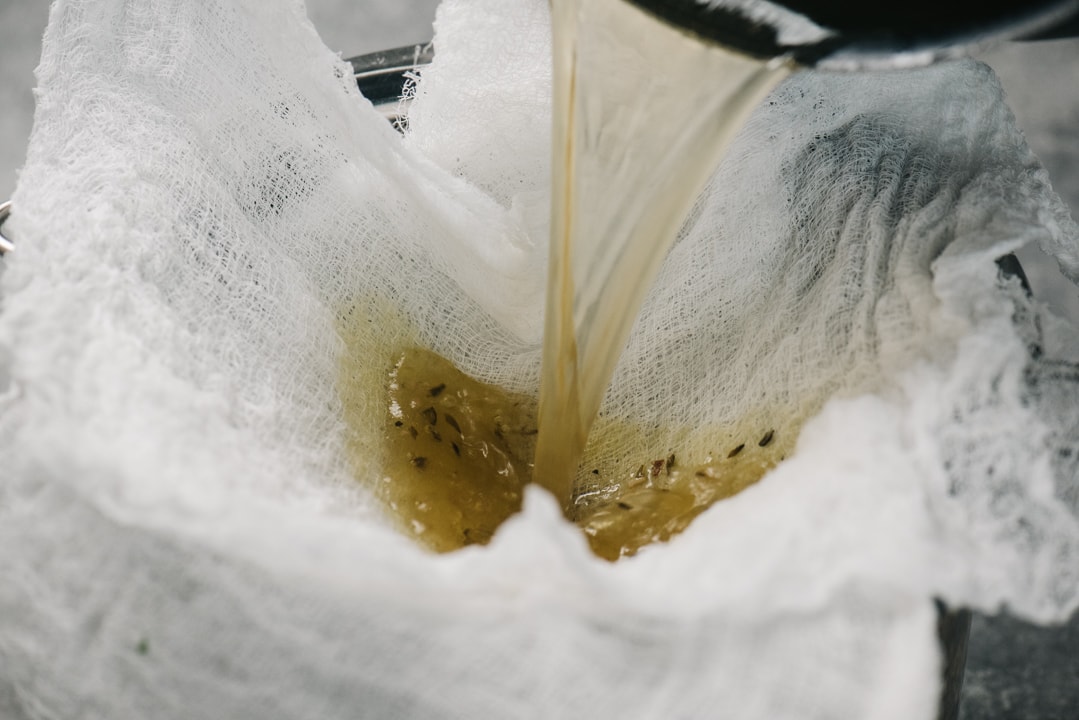
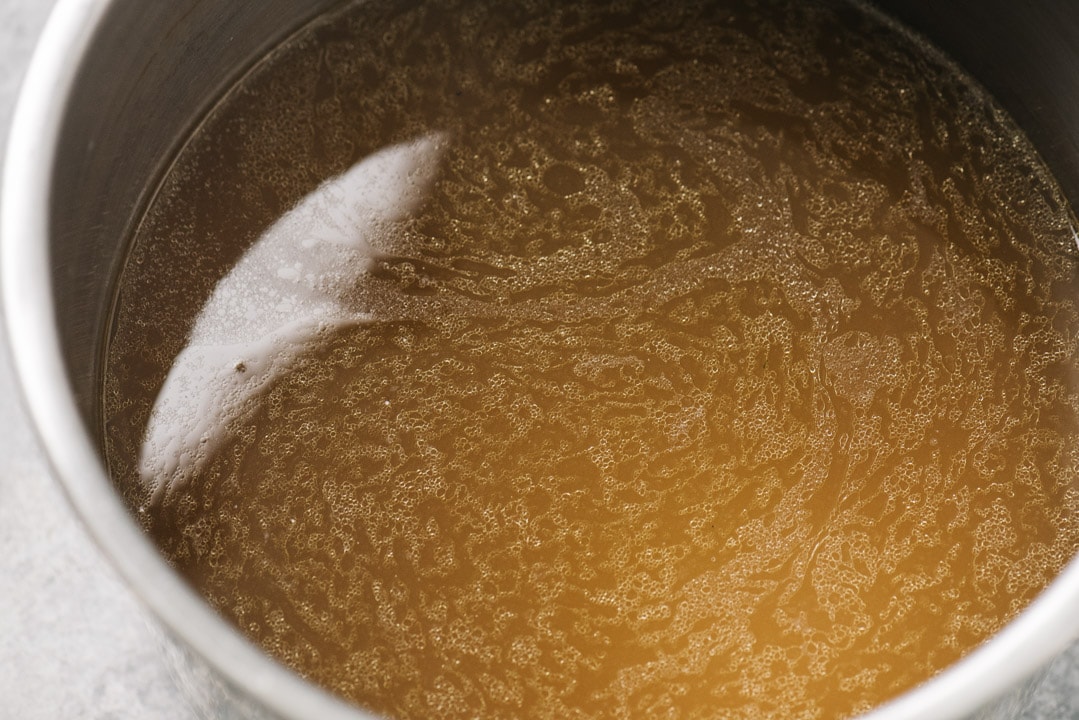
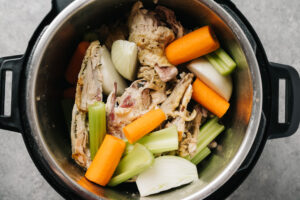
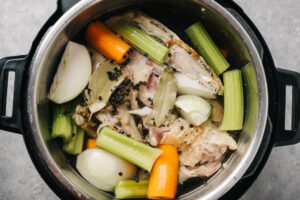
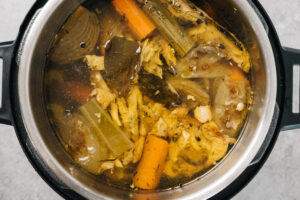
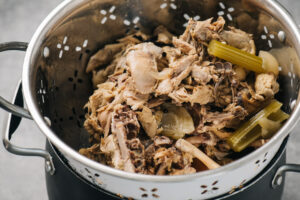



[…] Homemade chicken bone broth or stock always takes a soup next level. If you have it, use it! […]